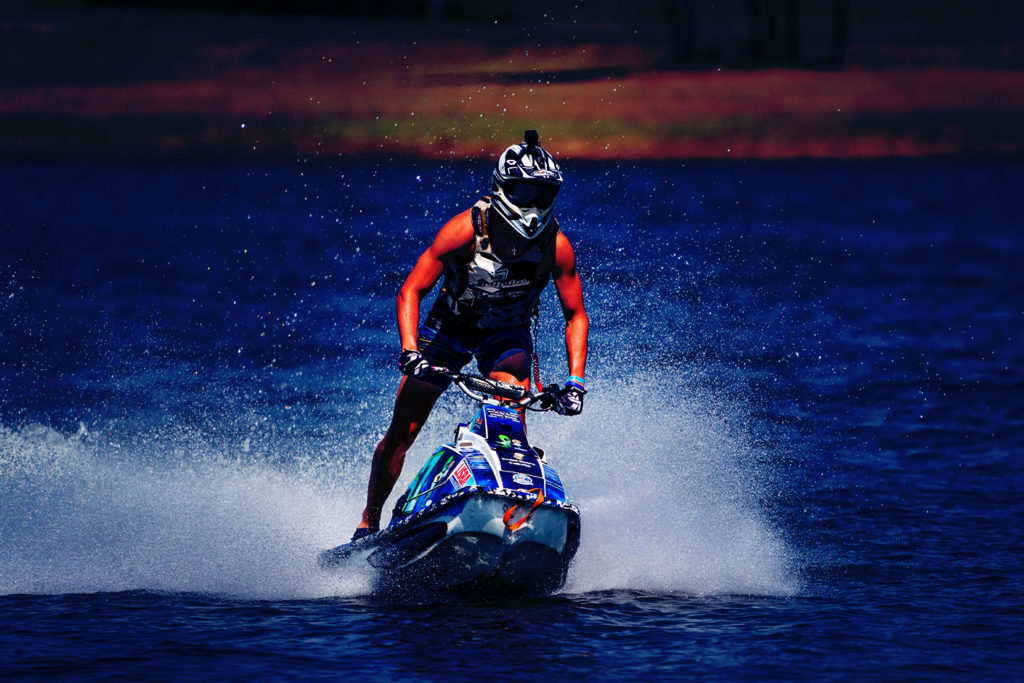Before the invention and popularization of jet skis, several types of watercraft and water-based recreational vehicles existed, each with its own characteristics and purposes.
Here are some predecessors to jet skis and similar personal watercraft…
- Stand-Up Personal Watercraft (PWC) – Stand-up personal watercraft, often considered a predecessor to modern jet skis, gained popularity in the 1970s and 1980s. These compact, lightweight watercraft were designed for one rider to stand upright while riding, similar to a motorized surfboard. They were originally powered by two-stroke engines and were used primarily for recreational riding and racing.
- Motorized Surfboards – In the mid-20th century, motorized surfboards, also known as motorized surfboards or surf scooters, were developed. These devices allowed riders to surf without paddling, using a small motor to propel them across the water’s surface.
- Water Scooters – Water scooters emerged in the 1950s and 1960s and were early predecessors to jet skis. These were small, motorized watercraft designed for recreational use on lakes and rivers. They were often powered by small outboard motors and were used for leisurely cruising and exploring.
- Personal Watercraft (PWC) – “personal watercraft” refers to any minor, motorized watercraft designed for individual use. This category includes jet skis and similar craft used for recreation, racing, and water sports. The modern jet ski, as we know it today, evolved from these earlier designs and innovations.
- Hydrocycles – Hydrocycles, also known as water bikes or hydrobikes, are human-powered watercraft that resemble bicycles but are designed for use on water. They have pedals and can be used for leisurely paddling or racing.
These predecessors contributed to the development and evolution of jet skis and personal watercraft, which have become popular for their versatility, speed, maneuverability, and ability to provide thrilling water-based recreation and adventure.



